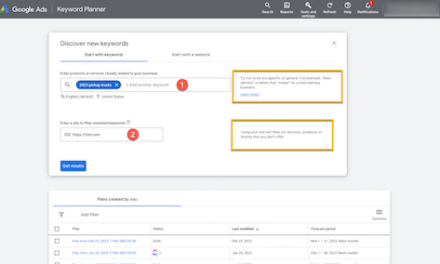If you’re looking to increase your website’s visibility and attract more organic traffic, keyword research is a crucial step in the process. Keyword research involves identifying the words and phrases that people use to search for products or services like yours. By optimizing your website for these keywords, you can improve your search engine rankings and drive more qualified traffic to your site. Here’s a step-by-step guide on how to do keyword research:
Step 1: Brainstorm Topics and Seed Keywords
Start by brainstorming a list of topics that are relevant to your business. Then, use these topics to generate a list of seed keywords – broad terms that describe the products, services, or content on your website. For example, if you run a fitness blog, your seed keywords might include “workout routines,” “healthy eating,” and “fitness tips.”
Step 2: Use a Keyword Research Tool
Once you have a list of seed keywords, use a keyword research tool to generate a more extensive list of related keywords. Some popular keyword research tools include Google Keyword Planner, Ahrefs, and SEMrush. These tools will provide you with data on search volume, competition, and related keywords.
Step 3: Analyze Keyword Metrics
Next, analyze the keyword metrics to identify the keywords that are most relevant and valuable to your website. Look for keywords with high search volume and low competition, as these are the keywords that will be easier to rank for. Also, consider the intent behind the keyword – are people searching for information, products, or services?
Step 4: Prioritize and Organize Keywords
Once you’ve analyzed the keyword metrics, prioritize and organize the keywords into categories. This will help you create targeted content and optimize your website for specific keywords. For example, you might create a category for “weight loss tips” and another for “healthy recipes.”
Step 5: Monitor and Adjust
Keyword research is an ongoing process, and it’s essential to monitor your rankings and adjust your strategy accordingly. Regularly check your website’s search engine rankings for your target keywords, and make adjustments to your content and optimization strategy as needed.
In conclusion, keyword research is a critical component of any SEO strategy. By following these steps, you can identify the most valuable keywords for your website and optimize your content and website to attract more qualified traffic.
Shapes and Pages does keyword research and can also produce keyword pillar and cluster recommendations





